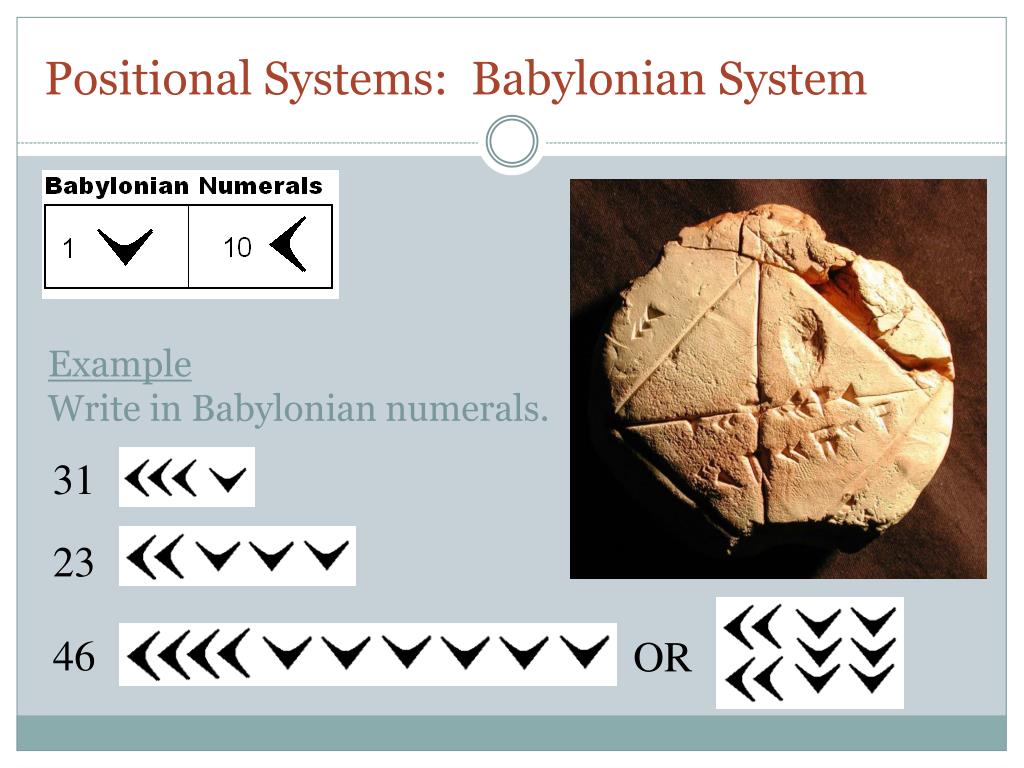

In base 60 numbers, it made sense to define it this way as 360 in Babylonian numerals would be (4)(0). The angle composing 1/360 of the circle is a Babylonian invention.One drawback to base 60 numbers is that if you wanted to memorize a base 60 multiplication table, you would have to memorize 1830 entries! In base 10 there are only 55.In general, it is much easier to write a fraction if it’s denominator is a factor of the base, hence more numbers can be expressed simply with base 60 numbers. It would be written as 0.(20) where (20) is a single numeral. In base 10, such a simple fraction as 1/3 does not terminate: 0.33333… In base 60, it is easy to write since 1/3 is 20/60. This makes a difference in how easy it is to write fractions. Ten, on the other hand can only be divided evenly by 2 or 5. That meant that it was not possible to write numbers larger than a certain amount in those systems.īase 60 numbers have significant advantages over base 10 numbers. Before Babylonian numerals, most systems had a different symbol for each power of the base: a symbol for 10, another for 100, and so on. This was a significant advance compared to previous numeral systems such as the non-positional Egyptian one. You wouldn’t wonder whether you were looking at one ox or 60 oxen! On the other hand, it is usually pretty clear if a number should be 1, 60, or 3600. The reader had to know something about what you were writing to be able to figure that out. That is, if you wrote the numeral for one it wasn’t totally clear if you meant 1 or 60. The Babylonian system did’t include a direct equivalent to our decimal point. It never was used at the end of a number in the way we use zero in numbers like 10 or 200.

It was only used between other numerals as a placeholder. That would have sometimes been problematic, as it might not always be clear how many blank spaces had been left. At first, a blank space was used to mean what we would use zero for. The second one was the second most significant and so on. The first numeral on the left was the most significant, or the one representing the largest value. For example, I will write 60 like (1)(0).īabylonian numbers were written in a fashion similar to ours. Instead I will use parenthesis around normal base 10 numbers. I will not write out any more Babylonian numerals with their notation. The Babylonian number system has separate symbols for each number from one to 59: Of course, the Babylonians didn’t write it like that. In their base 60 number system, this would have been the way they thought about 1559.37: Number However, they are not truly positional number systems. Actually, base one number systems exist: tally marks use base one. We could have used any number other than zero or one. Now, we don’t have to 10 as our base as we did there. For example, in our base ten Arabic numerals, this is what we mean when we write the number 1559.37: Number

Positional number systems (like the customary Arabic numerals) represent numbers as multiples of a base and powers of it. Not every number system used the same base, in fact, some used base 5, base 12, base 20, or even base 60! Numbers and systems for writing them have a very long and varied history.


 0 kommentar(er)
0 kommentar(er)
